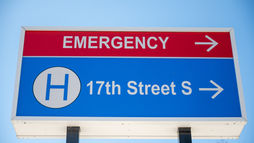

How Technology Is Transforming the Way Healthcare Facilities Operate
Discover how technology improves healthcare with faster check-ins, virtual care, automation, and better patient outcomes.


Leadership and Teamwork: The Heart of Emergency Nursing
Explore the vital role of the emergency nurse in crisis situations, where leadership and clear thinking are essential for quality care.


Healing Emotional Trauma After Physical Injury
Explore the deep effects of physical trauma on emotional well-being and healing processes for a smoother recovery journey.


Transforming Local Healthcare with Digital Health Tools
Explore how digital health tools are revolutionizing healthcare delivery for more effective and personalized patient care.


Struggling With Dry Skin and Eczema? 5 Tips That Can Help
Discover simple, natural ways to soothe dry skin and manage eczema for smoother, healthier skin every day


Why Light-Based Therapies Are the Future of Skin Care
Discover how light-based skincare treatments offer safe, non-invasive solutions for acne, aging, and skin rejuvenation.


Enhancing Senior Independence with Mobile Medical Alerts
Explore how mobile medical alert systems promote senior independence and enhance safety for the elderly.


Life After Loss: Grief Tools To Help You Go On
Discover spiritual tools to find peace, strength, and healing after loss. Learn gentle ways to move forward with hope.


CPR and First Aid Certification for Childcare Licensing
Understand the importance of CPR and First Aid certification for childcare licensing compliance. Learn how proper training ensures child safety and meets state requirements.






